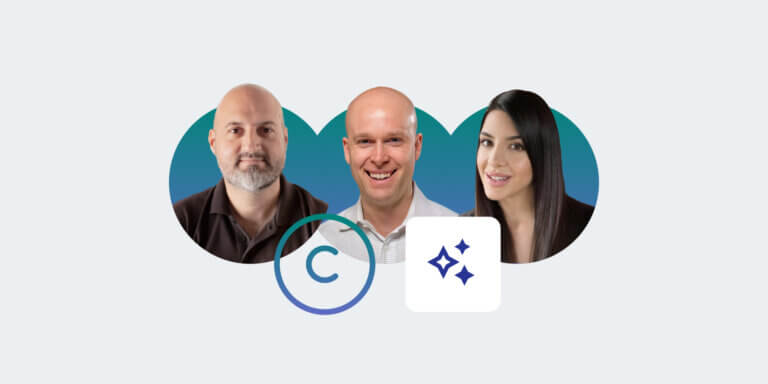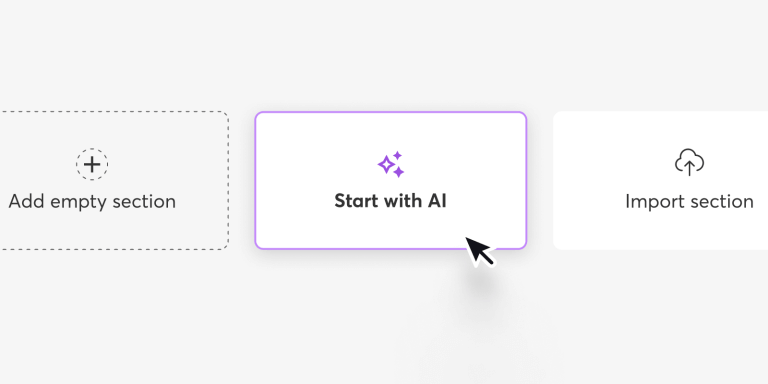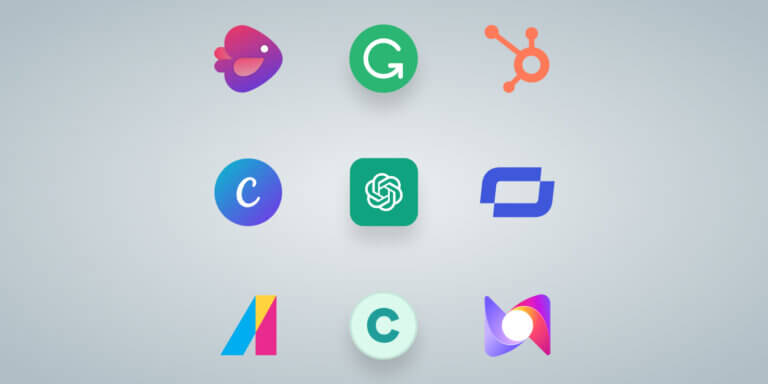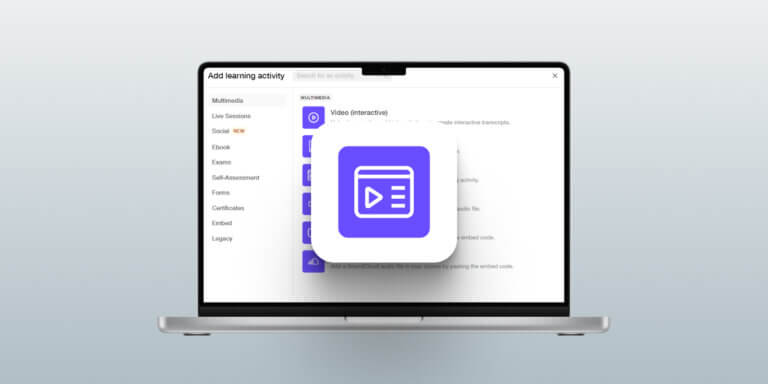Table of Contents
In our recent webinar, “Ethical and Legal Implications of AI in Learning Design,” we discussed the legal and ethical challenges of using AI to generate content.
The webinar was hosted by Panos Siozos, LearnWorlds CEO and co-founder, Noah Waisberg Zuva CEO and co-founder with extensive experience in AI for and the legal space, and Vassia Pikrou, legal counsel at LearnWorlds.
In this blog post, we highlight the key takeaways from our conversation and include a bonus section where our legal counsel answers our audience’s questions.
For the full discussion, including deeper insights and expert advice, watch the webinar on demand.
AI and intellectual property
In the first part of the webinar, we tried to answer a burning question for anyone who creates content using AI tools:
“What is the minimum human input for a literary, scientific, or artistic work to be eligible for copyright protection in the US and EU?”
Clearing this out will help creators understand how to secure copyright over their work and ensure they can financially exploit their creations. But first…
What is intellectual property (IP) and copyright protection?
Intellectual property refers to any creation of the mind resulting from intellectual or creative effort, such as literary works, inventions, design, news, compositions, software, and more.
Copyright protection is a set of legal rights that protect such creations, allowing creators to have control over the use of their intellectual labor.
Both the EU and the US have long-standing systems for IP protection, which include copyright, trademarks, trade secrets, and patents to ensure creators’ rights are recognized and upheld.
The rights provided by copyright protection are:
If copyright is granted, you will have protection over your content for the span of your life, plus 70 years afterward. And if there is a work-for-hire involved, we’re talking about the entire again life of the author, plus 95 years.
The fair use doctrine in the USA allows for limited use of copyrighted material without the creator’s permission.
The same rights are provided in the USA and EU, except that in the EU there is not a fair use doctrine per se but a similar concept.
Copyright protection under the use of AI
Do works with AI-generated content enjoy copyright protection? To answer this complicated question, we started by examining an example of a recent, relevant case.
The case of Zarya of Dawn
Zarya of Dawn is a comic book created by Kristina Kashtanova, who wrote the text herself but used MidJourney—an AI tool— to generate the images. Once the comic book was completed, she submitted it to the US Copyright Office for protection. Initially, the US Copyright Office granted copyright protection without knowing that AI had been involved in the creation of the images.
Once this information was made public, the US Copyright Office reopened the case to examine this critical question:
Was MidJourney merely an assisting instrument that followed instructions, or did it actually conceive and execute a work?
Eventually, the US Copyright Office rejected full copyright protection on the grounds of insufficient human involvement in the creation of the images.
This case has made history, though, because the US Copyright Office granted copyright protection for the elements of the comic where human involvement demonstrated creative control while rejecting protection for the AI-generated images due to a significant gap between the creator’s input and AI’s output.
This case highlights a fundamental principle in both the U.S. and EU: copyright is inextricably linked with human authorship—this means that only humans can enjoy copyright protection. Both regions require human creativity and originality at the core of the creation process to allow work to be eligible for copyright protection.
Four factors that affect copyright protection
What determines whether your work is eligible for copyright protection? Several factors come into play:
Why AI content generators are unpredictable and put copyright protection at risk
MidJourney and similar AI tools are considered unpredictable, which can reduce your chances of receiving copyright protection. Here’s why:
Strategies for increasing your chances of obtaining copyright protection for AI-assisted creations
While using generative AI makes it harder to secure copyright protection for your work, there are some steps you can take to strengthen your claim:
💡 Read our blog post AI for Instructional Design: A Complete Guide for Writing Engaging Educational Texts to learn how AI can help you create educational content.
The EU AI Act has established transparency requirements, which can help creators explain how the AI tool generated the outcome and the creative process followed. This can help you illustrate the level of human control required by the US Copyright Office and the respective EU authorities to gain copyright protection.
Ethical considerations around AI
After discussing copyright protection, we delved into key ethical questions surrounding AI, from the way AI systems are trained to the quality and fairness of their output.
Is it “fair use” to train AI systems on publicly available data?
AI models are often developed by “vacuuming” massive amounts of data from the web. This raises two significant concerns:
Does choosing an established vendor offer more protection for data privacy?
Data privacy and whether your data will be used to train an AI system is another ethical concern. If confidentiality matters to you, opting out of data collection is often possible.
What does the training process for AI systems look like?
Training AI often means that millions of images, let’s say, are manually tagged by workers, many of whom come from underprivileged backgrounds. These workers must go through exhaustive work hours and, in some cases, expose themselves to disturbing content.
What have AI systems been trained with?
Training AI on content from the public sphere is one thing, but training it using data from questionable sources—such as the dark web—creates an entirely different set of issues. Additionally, some AI systems are trained under political regimes with distinct purposes, ethical frameworks, and even languages, which can influence their outputs in unexpected ways.
Is AI-generated content biased?
Generative AI tools have been trained on data pulled from various, sometimes dubious, resources. Therefore, bias in the input data might result in bias in the output. At the core of this issue lies human responsibility. Our involvement and direction at every step of the creation process are essential to ensure the quality of the output.
AI for content creation: what’s next?
Here at LearnWorlds, we say that you will not be replaced by AI, but you will be replaced by someone who uses AI. Despite the risks, you have to use AI, but do it in an ethical and responsible way.
As creators, instructional designers, entrepreneurs, and professionals, we need to set the bar even higher to direct any kind of creative process that is under our control so that we give it uniqueness, creativity, essence, value, and human character—even if multiplied and accelerated with some generative AI help—so that we can have a unique quality and valuable output for our audiences.
Watch our webinar for more insights and practical tips on navigating the ethical and legal challenges of using AI in content creation.
FAQs
How can you measure the degree of human input?
There are no specific elements or guidelines, and each case is examined separately. However, it is important to determine whether you have used AI as a tool to refine your own creation. The intellectual labor must be yours and once you obtain the output, you need to further share the creation based on creative concepts.
However, there are tools like Midjourney where you will need to work a lot on the output as they do not comprehend the requirement and act based on it, but rather proceed in a creation based on the tool’s library and connect your input to the available information that it has. This creates a distance between human authorship and the final outcome.
Keep in mind that to be granted IP protection, you need to display creative labor and originality and that you have used the AI platform as a tool and nothing more.
How can Generative AI both give a creator rights to the image but also give the software platforms a blank check into allowing their open communities rights to remix them perpetually? Aren’t those two clauses in conflict?
It depends on the rights you are referring to and the platform. In the case of ChatGPT that we examined in our webinar, and after review of the relevant terms of service, if the user makes the correct setting as an individual or via a business account, then indeed, any right to the input and output belongs to them and cannot be used by the AI platform to train its model further.
This is not the case, though, with all AI tools and services. Each has its own terms of service that you will need to properly review prior to any use. Further to the above, despite the fact that ChatGPT acknowledges that the intellectual property rights belong to the user, as we have seen in our webinar, this might not be the case with the competent copyright office.
How would you document your involvement in the creative process? Where does that information go?
Any kind of written documentation you can use as proof before the competent authorities to support your claim that your creation should be granted copyright protection as an original work of human labor and creativity.
So if you created your own creative output AI (trained only on your own body of work) and used it to create more art/writing, would that art be copyright-eligible?
It depends on the model you are working on and the process and work you will apply afterward in the output. Unfortunately, we do not yet have clear guidelines, but if the generative AI model essentially uses your prompt and creates something entirely new via its own connections, then your work would not be copyright-eligible.
If you follow the below-mentioned strategy, then you have applied all necessary steps towards such protection:
1. Ensure significant human input
In both the EU and the US, human creativity and control over the final output are key to IP protection. Simply prompting an AI tool like Midjourney may not meet the threshold for “authorship” because the AI largely determines the output.
Strategies:
2. Proper documentation
When using AI tools like Midjourney, documenting your creative process becomes essential. You need to show that substantial human creativity was involved in producing the final work.
Strategies:
3. Disclose the role of AI
Both the EU and US require transparency about AI involvement. If you’re seeking copyright protection for AI-assisted work, you must clearly disclose the role that AI played in creating the work.
You mentioned that we have to “document” our creations. So, for example, if I use a notebook to draw a draft of the images I will upload to the AI, is this enough? Is it valid?
Yes, it is in a written form that could be used as proof that this creation was and is your own intellectual labor.
Google search engine has a tag for copyright licenses. Do you know if current AI content generators have this parameter?
We cannot be aware of how all AI content generators work, so this is why we advise you to always review the terms of service prior to any use.
How do you know whether content is AI-generated? Should people label where they’ve used it to help create content or graphics? Sometimes, it’s scarily good at mimicking brand tones… so how could anyone even identify AI-generated content to sue the originator for copyright infringement?
For the ethical creator, yes, and for the creator that seeks copyright protection, then yes, you will absolutely need to disclose the content that is AI generated when you seek protection and explain how this content has been created.
The EU AI Act in article 50 provides that “Providers of AI systems, including GPAI systems, generating synthetic audio, image, video or text content, shall ensure the outputs of the AI system are marked in a machine-readable format and detectable as artificially generated or manipulated. Providers shall ensure their technical solutions are effective, interoperable, robust, and reliable as far as this is technically feasible, taking into account specificities and limitations of different types of content, costs of implementation, and the generally acknowledged state-of-the-art, as may be reflected in relevant technical standards.“, hence this labeling obligations falls upon the providers of AI systems.
What kind of wording should we be looking for in vendor’s terms to “indemnify” us as users?
This is indicative and taken from ChatGPt’s terms of service: “OpenAI’s indemnification obligations to API customers under the Agreement include any third party claim that Customer’s use or distribution of Output infringes a third party’s intellectual property right. We suggest obtaining legal counsel to make such a determination.”
I’m a creative director of visual content and leverage AI as a tool only. My concern is will my process and/or content be learned from and used by AI for others? I have to make sure what I’m working on doesn’t leak before it’s officially launched into the public. After it’s out in the world, it’s, of course, a free for all.
To ensure that the AI platform and tool will not train on your input, then it is imperative to always read carefully the terms of service of each such tool. In the case of ChatGPT, a business account is supported by the relevant terms that it offers protection and does not allow ChatGPT to train its model.
What are even the legal issues with bias generally? At what point is it illegal?
Any bias leading to discrimination or hate speech can be considered to violate both EU and US laws opening, in case of usage and taking decisions based on this information, the user to potential liability.
What about “character references”? Is the input of a copyrighted piece as an influence not copyrightable, correct?
You are correct in stating that inputting a copyrighted piece as an influence does not make the output inherently copyrightable.
However, copyright protects original expression. If the new work uses elements of the copyrighted work but transforms them significantly (e.g., for parody, commentary, or criticism), it might qualify as fair use (under U.S. law) or a similar exception in other jurisdictions.
Copying verbatim or creating derivative works based on substantial parts of the original without permission may infringe copyright, even if done as “influence.”

Androniki Koumadoraki
Androniki is a Content Writer at LearnWorlds sharing Instructional Design and marketing tips. With solid experience in B2B writing and technical translation, she is passionate about learning and spreading knowledge. She is also an aspiring yogi, a book nerd, and a talented transponster.




